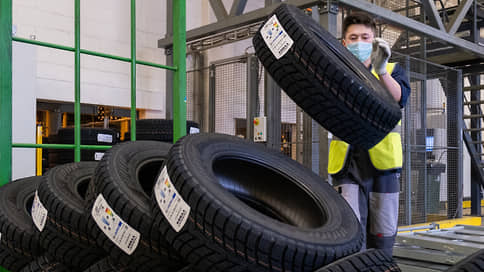Tires were put on the shelves – Newspaper Kommersant No. 185 (7386) dated 10/06/2022
[ad_1]

Stocks of winter tires by the beginning of the season in Russia amounted to 33 million pieces, which is comparable to the volume of annual sales of all passenger tires in Russia. Compared to last year, prices for them increased by an average of 1.5 times, which market participants expected even before the crisis began – because of the cost of raw materials. The total reserves are kept at the level of 80 million pieces, being actively replenished with imports from China, Korea and Turkey. Moreover, shipments from these countries to the Russian Federation in July-August increased significantly for the first time since the beginning of the crisis.
Stocks of tires in Russia by September amounted to more than 80 million pieces, calculated in the “Honest sign”. This is 30% more than a year earlier. Of these, more than 33 million tires are winter tires, which is 43% more than in the last tire change season. Current stocks of winter tires are estimated by CRPT (labeling system operator) to last more than nine months. In recent years, the entire passenger car tire market has been around 30–40 million units per year.
At the same time, the weighted average cost of passenger tires increased by 46.5% compared to last year, to 6.8 thousand rubles. Droma estimates that new car tires have risen in price by 42% over the year, used tires – by 23%. Compared to the spring peak, prices dipped a little – then, against the backdrop of suspensions in the production and import of new tires in the Russian Federation, which coincided with the season for changing tires, a used set of tires would cost 1 thousand rubles. expensive. At the same time, even before the crisis began, Nokian Tires warned that the rise in tire prices would continue due to the rise in the cost of raw materials. The possibility of production is also significantly affected by the supply of natural rubber: in August, the authorities of the Lipetsk region announced the resumption of production at the Yokohama plant (idle since March) after the procurement of this component.
Of the total reserves, 65% are produced in the Russian Federation, the rest is imported. The main importers of winter tires in Russia are China, Hong Kong, South Korea, Turkey and Uzbekistan, the CRPT notes.
The recovery in the pace of shipments for most of these importing countries occurred in the summer. Thus, according to Chinese customs statistics, the supply of tires for passenger cars in Russia exceeded pre-crisis levels, reaching $38 million in July and $34.3 million in August.
The situation is similar for tires for buses and trucks: $43.4 million and $56.1 million, respectively. The number of ads offering Chinese tires at Droma grew by 25%, and interest in them grew by a third.
The volume of deliveries of passenger tires from Korea in August almost tripled those in July, reaching $ 8.9 million. Shipments of tires for trucks and buses to the Russian market were insignificant in terms of volume until July, amounting to $ 857 thousand only in August. Exports from Turkey also slightly recovered in August — up to $1.3 million, or 34,000 tires for passenger cars. The situation is similar for trucks and buses, but in August deliveries exceeded pre-crisis levels: almost 20,000 tires worth $5.3 million were exported.
The total volume of stocks has not actually fallen since the spring (see Kommersant of April 7). However, then the market was talking about the shortage of some sizes. Droma believes that there will be no shortage of tires in the Russian Federation, but “there may be difficulties in finding unpopular sizes at an affordable price.” According to Kirill Volkov, head of the CRPT excise-free product groups, “at some points, buyers may encounter a lack of specific familiar brands, but they can always find a worthy alternative, including in the segment of rare sizes for sports cars and tuned cars.”
Sergey Udalov from Avtostat notes that stocks of winter tires on the market were formed based on the fact that 1.6 million new cars will be sold, and now the market by the end of the year can only approach 0.6 million units. As Kommersant wrote on February 10, at the end of 2021, warehouses were already actively replenished for the start of this year’s season. In addition, part of the manufactured products was not used due to shutdowns of car factories of foreign concerns. To complete new cars, now mainly mass sizes are spent, since in the Russian Federation in recent months mainly budget models have been produced and sold, while premium and rare tires will be needed less than before, adds Sergey Udalov. At the same time, the expert points out, since the replacement period for summer tires is three to four years, in the spring of 2023 it will be necessary to update them on cars sold in 2018-2020.
[ad_2]
Source link





